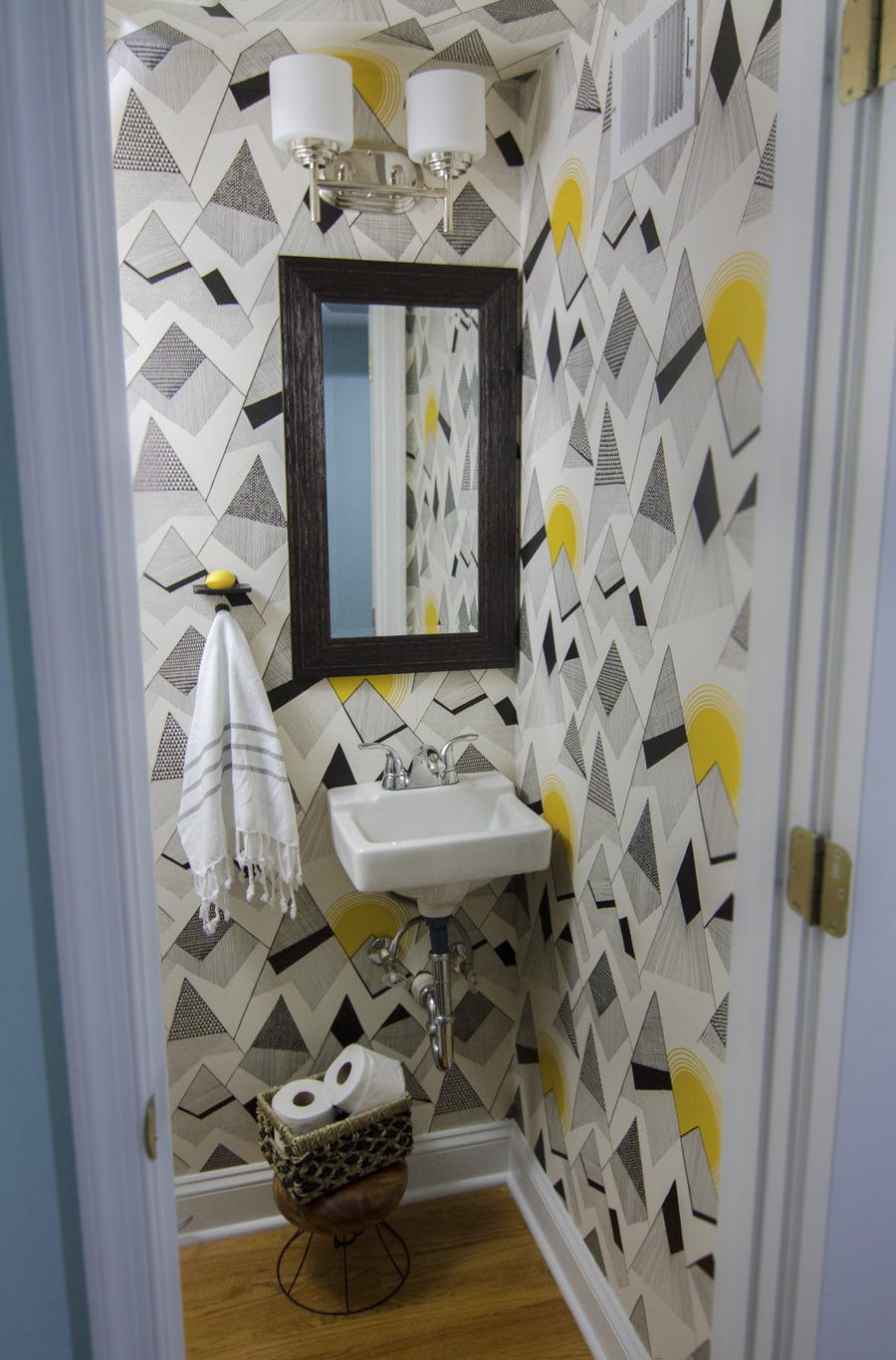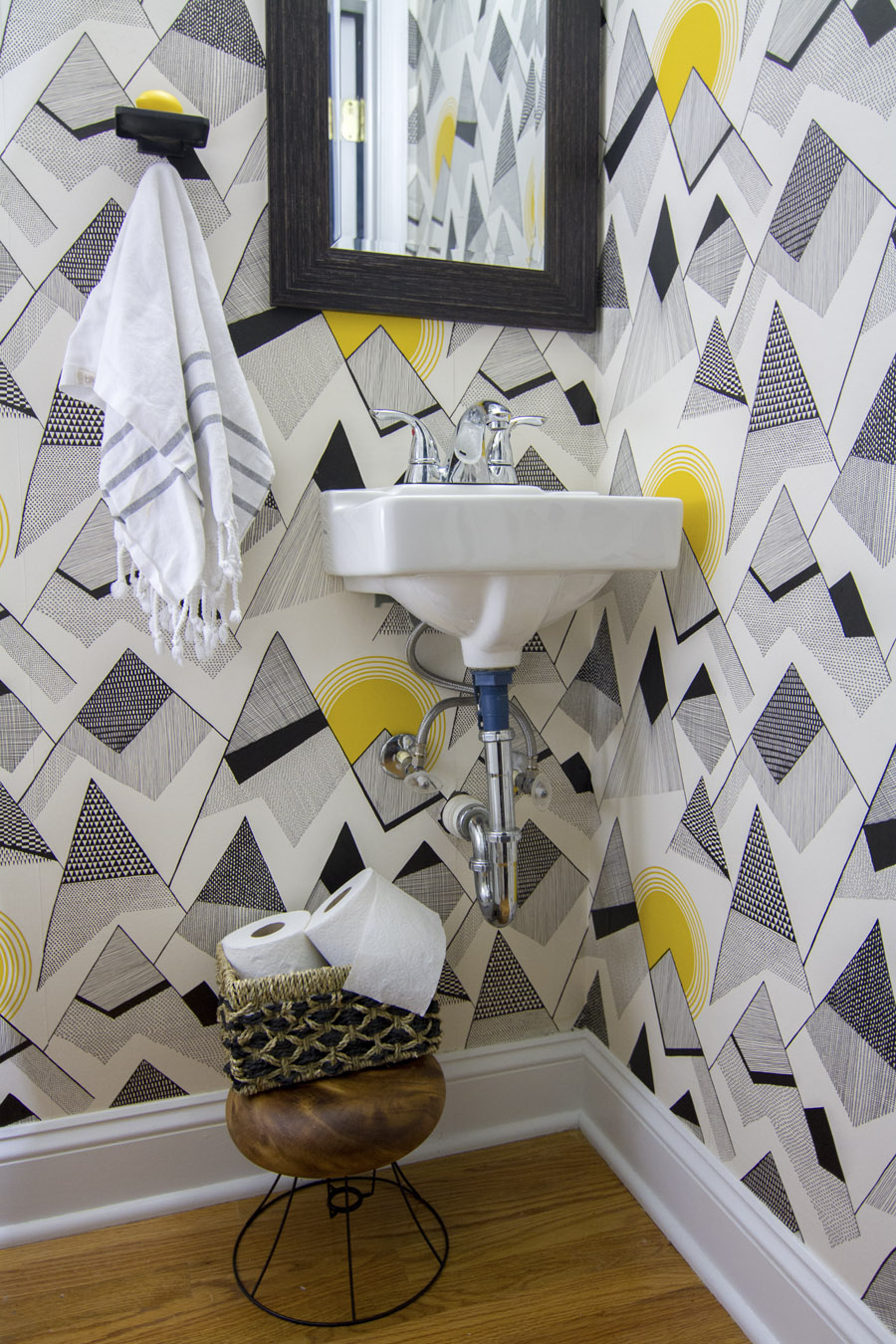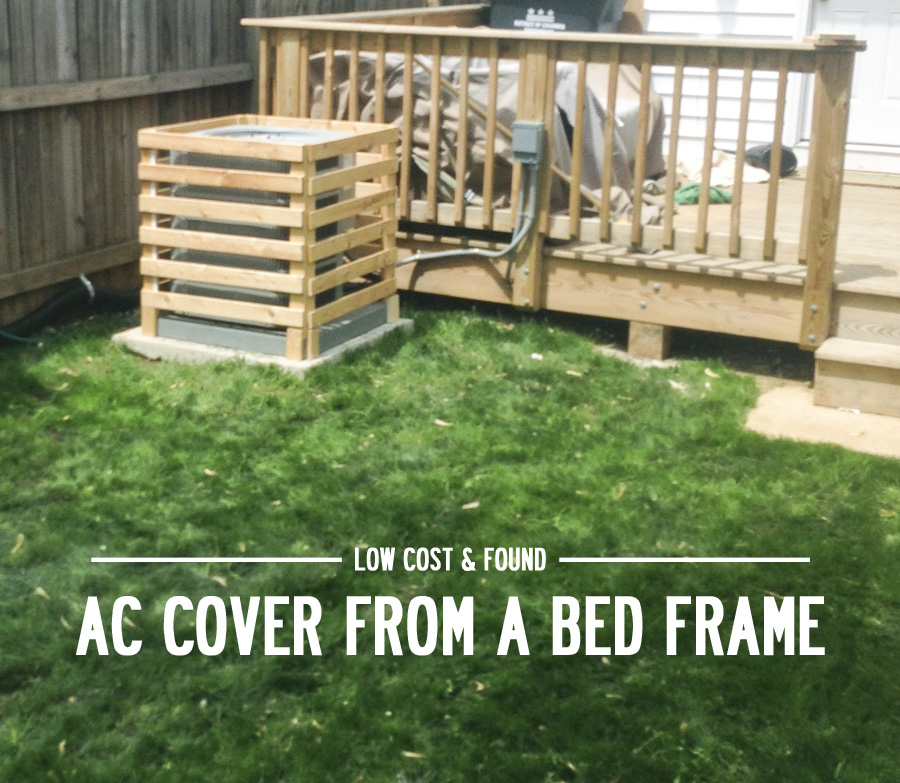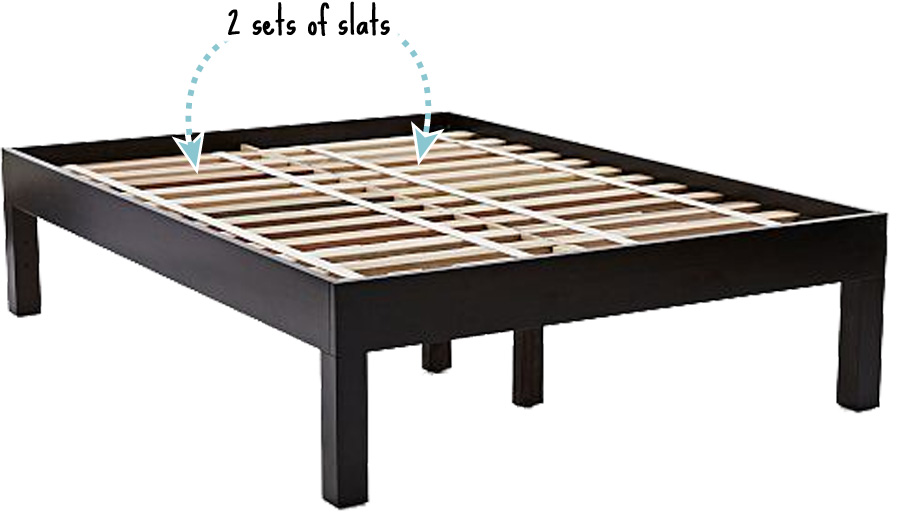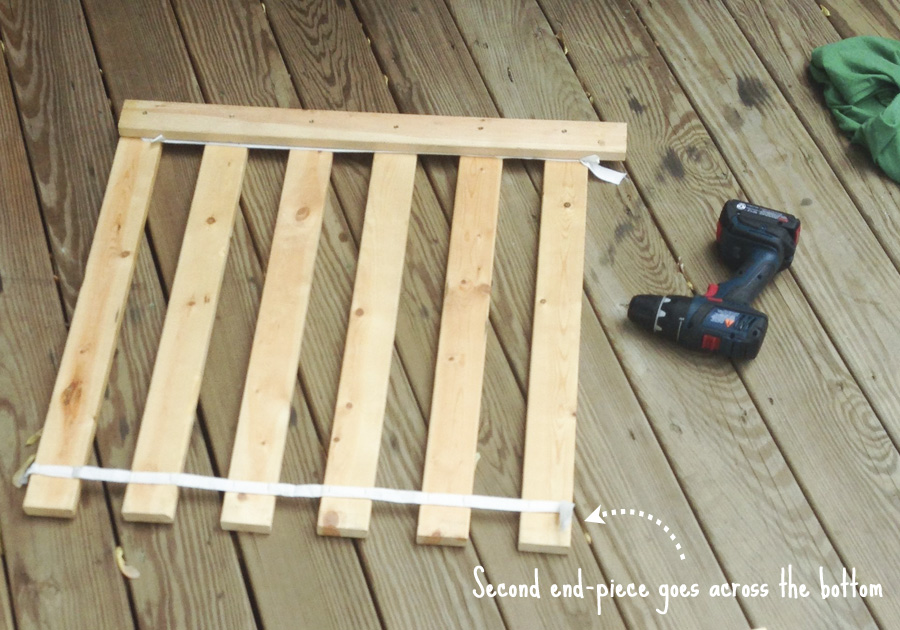Last weekend Eli & I finally got a few dry days to stain the deck and it turned out to be quite the task! Eli took a timelapse of the whole process and while it looks easy peasy in hyperspeed, just know that it took enough time (& photos) to burn through 3 memory cards & 4 camera batteries! Take a look...
Halfway into the first coat I was feeling like Daniel-san in Karate Kid... you know, when he thinks he's almost done & then realizes he's no where close.
Our deck was newly built before we bought the house & it was one of the biggest selling points for us. Our last apartment was beautiful & modern but had virtually nowhere to hang out outside. We started feeling (and looking) like vampires who never saw the sun. Now that we have a deck, we practically live out there. It's where we hang out with friends, chat with our neighbors, drink coffee, eat dinner.... I'd sleep out there if mosquitos weren't a thing. In short, it's our favorite place. It's time to make it look as great as it feels.
Because the deck was built with new pressure-treated wood, we had to give it some time to acclimate before we could stain and seal it... I'm fairly confident the last year & a half was sufficient! Sure, we didn't need to wait that long, but we were having too much fun to take it out of commission during all the great weather. Now time is forcing our hand and it's a race against the clock (I told you!) The deck spent a lot of time under snow last year, so we gotta protect it before another winter swoops in to wreak havoc!
I fully expected staining the deck to be a weekend project but before we knew it it was Thursday morning & we were still at it. #CantStopWontStop In reality a majority of that time was waiting for stuff to dry & then waiting out the rain & then waiting for stuff to dry again. Let's hope we learned our lesson to start early!
Saturday morning we went to Home Depot to pick up supplies...
- Behr Premium all-in-one wood cleaner - $10
- Behr Premium transparent all-in-one stain & weatherproofer in Cordovan Brown- 2 gallons at $34/each
- Pump sprayer - $10
- Stiff-bristled deck brush – $6
- 2 nylon/polyester staining brushes - $10/each
- Stain pad + spare pad - $28 (not pictured)
- 2 paint trays - $2/each (not pictured)
... and $150 later we hunkered down and got to work.
Step 1: Clear off the deck
This was a great excuse to get rid of all the junk that had accumulated over the last 16 months. We don't have a garage or shed, but we still have lawn care tools, grass seed, wood scraps, etc. Without a good place to store all that stuff, our deck turned into an accidental open-air shed, and it was not a good look. Our favorite place shouldn't be an eyesore! Once all the stuff was gone & we'd swept, we were surprised by how big the space felt again. Note to self: must find a long-term outdoor storage solution.
Step 2: Deep cleaning
Before we could start applying any stain, we had to give the wood a thorough refresh & try to lift bike grease spots & other battle wounds our deck had collected over the year. We followed the directions on the bottle and hosed everything down with water. Then we diluted the cleaning solution in the pump sprayer with one part water to one part cleaner and sprayed our mixture all over the wood. I wore gloves, close-toed shoes & glasses to protect my skin & eyes from the spray.
After I'd sprayed all the posts, railings & boards, I poured some of the undiluted cleaner directly onto the grease stains in hopes that it would lighten them better. I let it sit for about 15 minutes to do its thang and then scrubbed the whole deck with a stiff-bristle deck brush – really laying into the dark spots. Then I wasedh it all away. It did a pretty good job brightening the wood & the bike grease was less noticeable (though not gone altogether). The scrubbing and rinsing took longer than I expected – keen observers may have noticed it was absent from the timelapse. That's because it got dark before I finished & we drained the first camera battery! Whoops!
Step 3: Let the deck dry completely
The wood has to be 100% dry before you can apply any sort of sealant. I went to bed nervous on Saturday night that it wouldn't be dry enough for us to stain on Sunday since I didn't finish rinsing til after 8 o'clock. Luckily Sunday was living up to its name & our south-facing deck was totally dry by about 1:30pm.
Step 4: Apply first coat of stain
Eli and I each grabbed a brush and set out to divide and conquer. First target: rails & posts. I squeezed between the fence & our deck to get the outside edges while E focused on the inside faces that we'd actually see everyday. I felt like a contortionist bending every which way to get the bottoms of boards because we aimed to coat all six sides of every piece of wood. Woof. I felt like an old lady that night – my lower back was killing me! We were really surprised by how much stain it took just to do the railings! About a half gallon for the first coat. We forgot to factor them in to our square footage calculation when deciding how much stain to buy, so Eli had to run back to Home Depot to get another gallon.
Meanwhile, I started on the floorboards. I used an applicator pad that screwed onto my broomstick & took it slow-n-steady. Because I was applying a thin coat, the stain dried pretty fast & I had to be careful not to overlap too much where I'd already applied because each pass would make it darker. I took it one board at a time – sometimes two – going from one end all the way to the other end. The directions on the can advised doing it this way so that the boards would have a consistent coloring and the whole deck wouldn't look patchy.
My applicator pad had a built-in "groove tool" that you could extend down, and it was supposed to get the cracks and boards in one fell swoop. Sounds great in theory, less so in practice. It was awkward to flip the tool down, difficult to dip it AND the pad into the stain, and even when I could do all that it simply wasn't very effective. The cracks were either too wide for the groove to reach the edges, or too narrow for the groove to fit at all. I gave up trying after the first couple boards – you can see the cracks are bare in the shot above. It's best to have a second person follow behind you to get those with a paint brush and to brush away any pooling stain. The applicator pad is pretty good at spreading stain evenly so it doesn't pool, but putting it down and picking it up from the wood leaves visible marks that you have to brush away.
Step 5: Apply second coat of stain
Behr's stain is supposed to dry for a couple hours before you start a second coat, but we were losing daylight fast. Staining is not one of those activities I like doing by porch light, so we called it a night & hoped to find time to finish during the week. Of course, there were a few torrential rain storms that really screwed up scheduling (& necessitated another Home Depot trip to get a huge tarp) but we finally got back to work Wednesday (for rails/posts) & Thursday (for floorboards). The second coat of stain goes a little faster than the first – especially because it's supposed to be suuuper thin.
Step 6: Wait for it to cure
Behr recommends waiting 72 hours for the stain to fully cure before replacing furniture, etc. We just finished staining yesterday, so we're still in the waiting period. Aaaaand it's raining again – let's hope this "weatherproofer" really works! The rain droplets look like they're beading up rather than soaking in, so that's a good sign.
Strictly speaking looks, I really like the darker wood. I choose to go dark because we learned early on that we were prone to stains (hello, bike grease) – so we wanted to be able to camouflage those and not have to worry about actually using our deck. Pay no mind to our gardenia that was murdered by a groundhog or the overzealous citronella plant ... nothing to see there! I mentioned earlier that we would stain the AC cover Eli built from a bed frame when we did the deck – but as you see it's glaringly absent in the "after" photo. We quickly realized we didn't have enough space or time to do both at once – there was no where for us to rest the cover without killing the grass. After the deck is fully cured & our arms fully functioning again we'll tackle that.
In the meantime I'm brainstorming ideas for how to style it up. I can't wait to get my favorite room back!
This post was not sponsored in any way, I'm just a girl on a mission.






